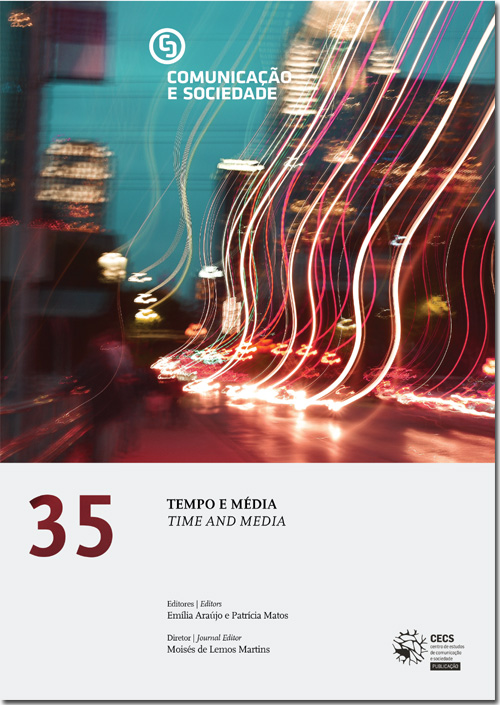Space-time compression and hyperlocalisation: the new flâneurs
DOI:
https://doi.org/10.17231/comsoc.35(2019).3142Palavras-chave:
Sentient city, space-time compression, power-chronography, augmented space, cyberflâneurResumo
The experience of sensations such as time acceleration and space elimination has become common in modern life, which is increasingly organised in tune with the “real time” imposed by digital media. Throughout this article and starting with the concept of “time compression” presented by David Harvey (1999), the authors contrast technological determinism with other perspectives that suggest there is a dialogue-based relationship between technology and society. The text discusses notions such as deterritorialisation and detemporalisation that make it possible to understand the emergence of a fragmented and timeless data space, which corresponds to a “new geography”, in which it is no longer possible to establish a clear boundary between the physical and the digital world. The text is theoretically underpinned by the concept of the cyberflâneur, exploring the similarities with the 19th century flâneur described by Baudelaire (1996). Analysis of a set of artistic and experimental interventions addressing issues such as hyperlocalisation or ubiquity and pervasiveness enables us to use the character of the cyberflâneur in a twofold sense – as a sign of technical acceleration and also as a symbol of resistance to such acceleration. The authors conclude that the exponential evolution and increasing “naturalisation” of technology obligates us to consider its determining role in social dynamics, namely by transforming our relationship with the dimensions of space and time.
Downloads
Downloads
Publicado
Como Citar
Edição
Secção
Licença
Os autores são titulares dos direitos de autor, concedendo à revista o direito de primeira publicação. O trabalho é licenciado com uma Licença Creative Commons - Atribuição 4.0 Internacional.












